BBC micro:bit review
The BBC Micro lives again to teach a new generation of kids! Well, sort of.
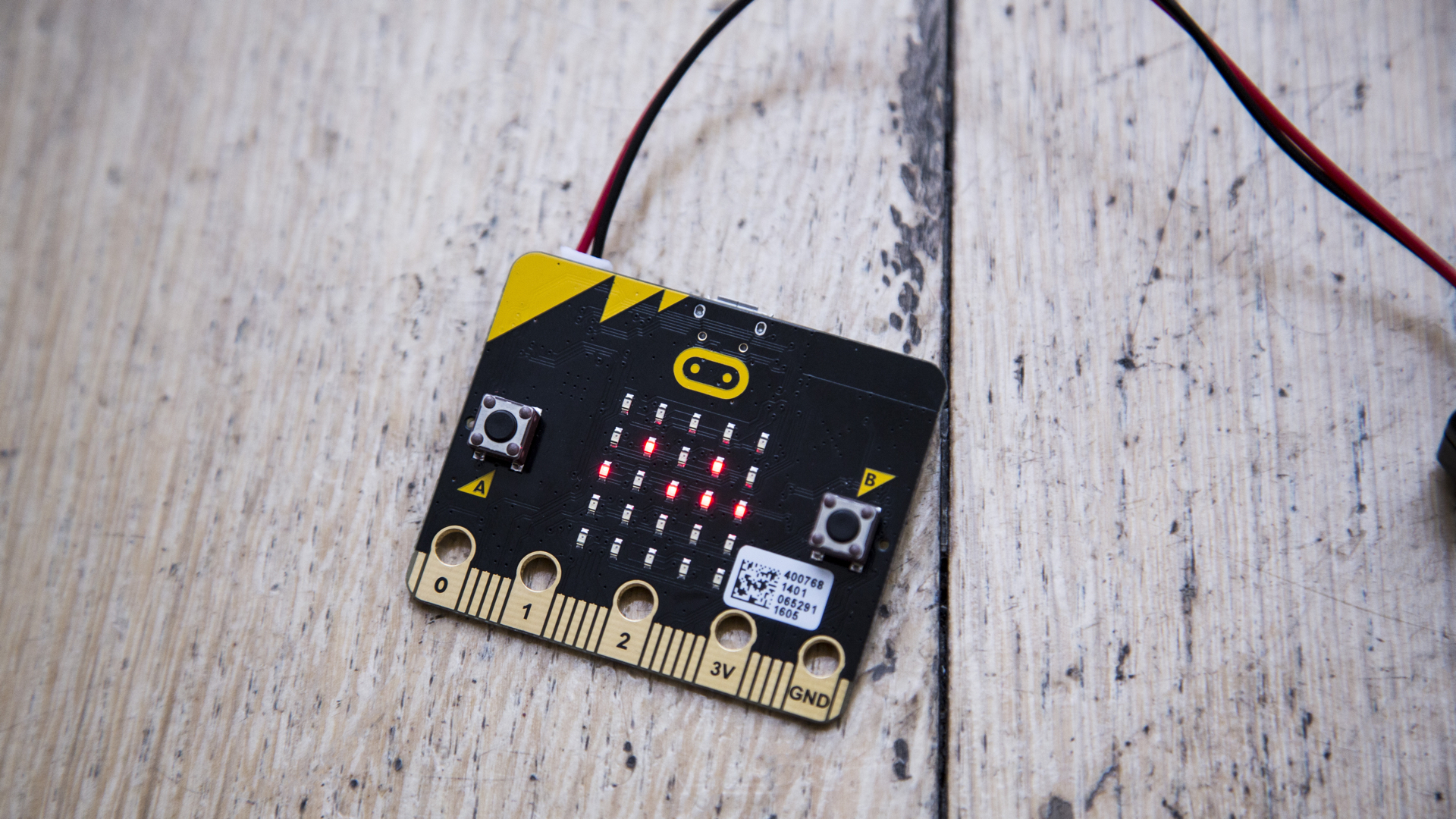
The BBC's new educational computer is really a programmable microcontroller, but it's held back by the quality of the projects and educational materials
-
+
Simple, well-designed hardware provides clear use cases; Variety of coding tools available
-
-
Teaching materials and projects use concepts without properly introducing them; Usefulness as a teaching tool highly dependent on teacher's familiarity with subject

The BBC micro:bit is a single-board computer designed to help schoolchildren engage with and learn about coding and software development. Unlike the Raspberry Pi and Imagination single-board systems, the micro:bit isn't a stand-alone computer, but rather a microcontroller with extra sensors and input/output connectors, designed to be programmed from another device a computer, tablet or smartphone.
With a built-in accelerometer, 25-LED display, Bluetooth Low Energy support and a few inputs and outputs, the micro:bit is first and foremost a tool that students can use to make their own embedded devices. While this means that it's inherently limited, it also means that the micro:bit's potential uses are more obvious than those of, for example, the Pi, which can leave novice users without a clear path when it comes to working out how to best use their new computer.
The micro:bit also comes with teachers' and parents' guides and project instructions in the form of both booklets and an accompanying website. These also include suggestions for the micro:bit's use in teaching Key Stage 3 Computing: years 7 through 9, for pupils between the ages of 11 and 14. However, the micro:bit is currently pitched as being for "young people's own independent use" and the teachers' information provides ideas, but no solid framework for integrating the device into the curriculum.
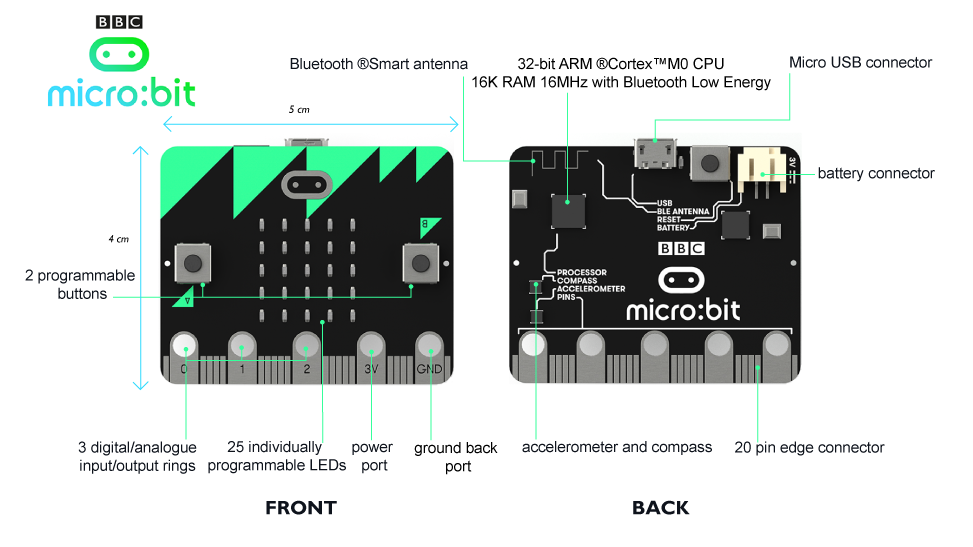
The micro:bit was developed in collaboration with a number of commercial, open source and academic partners, including Microsoft, Farnell element14, Samsung, Lancaster University and the Python Software Trust.
Hardware
The micro:bit has an ultra-low-power 32-bit ARM Cortex m0 processor - a microcontroller designed for embedded systems - and just 8MB of storage for the software it runs, so we're not talking about anything that can run a desktop operating system here. You write a program to control it, copy it over via USB, and the micro:bit proceeds to work as an entirely stand-alone device, hopefully doing whatever you programmed it to do.
As well as 25 LEDs in a 5x5 array that can be used as a simple display, the front of the micro:bit has a couple of buttons. At the bottom of the unit, input/output pins P0 through P2 allow you to use crocodile clips to connect external sensors and other devices. A 3V power output lets you directly power external hardware that needs it, while the board's very edge carries a further 20 pins. Some of these duplicate functions normally served by other components, such as the buttons, and you can use them as general purpose input/out (GPIO) connectors - most easily with a third-party edge connector.
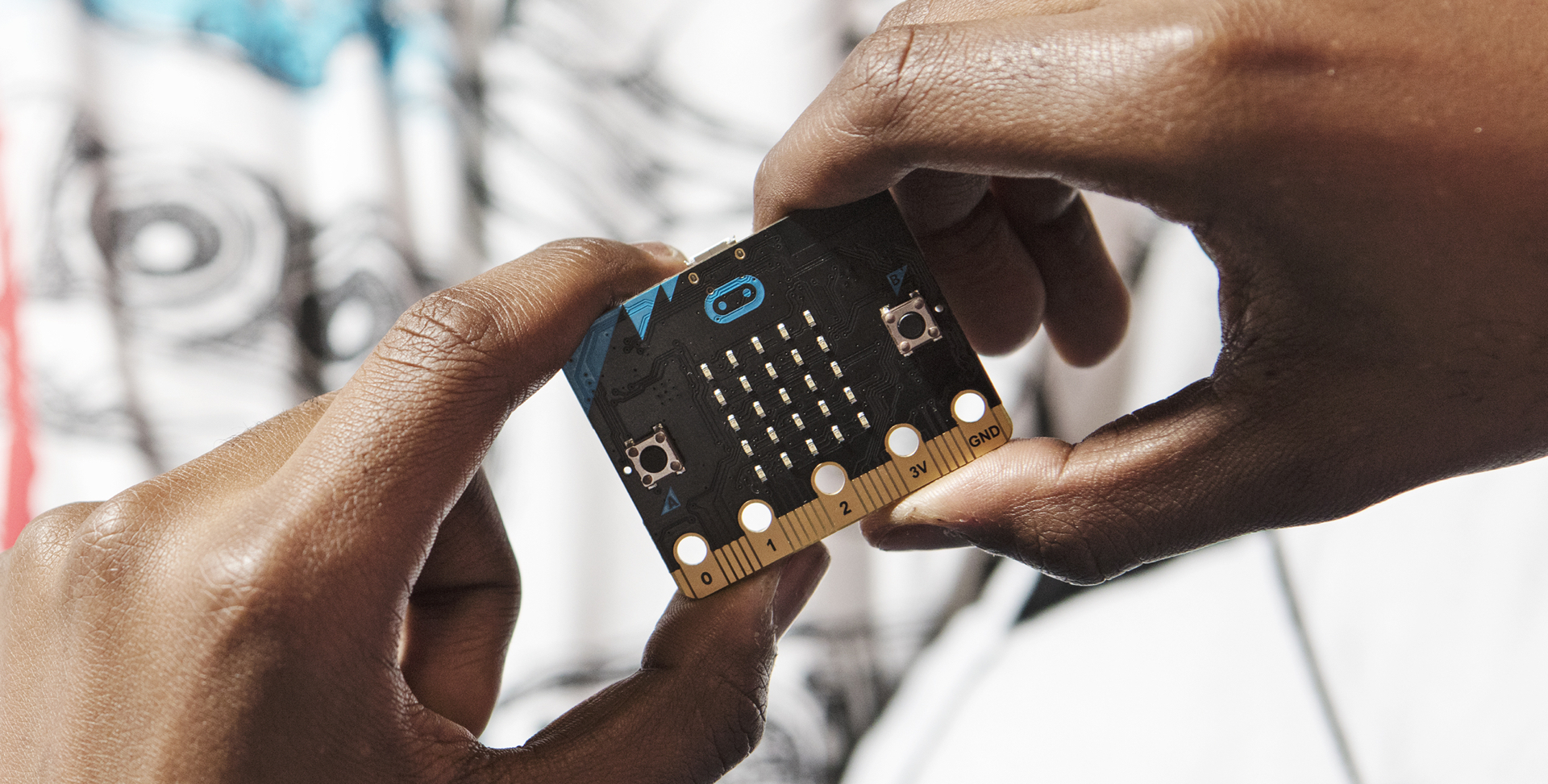
The micro:bit has a built-in accelerometer, compass and Bluetooth antenna. You can power it either via either a supplied 2xAAA battery pack or a micro-USB port that doubles as its communications and programming port when writing software to the device. Finally, there's a hard reset button and a couple of tiny holes that you can use to mount, hang, or sew the little computer into whatever position you need.
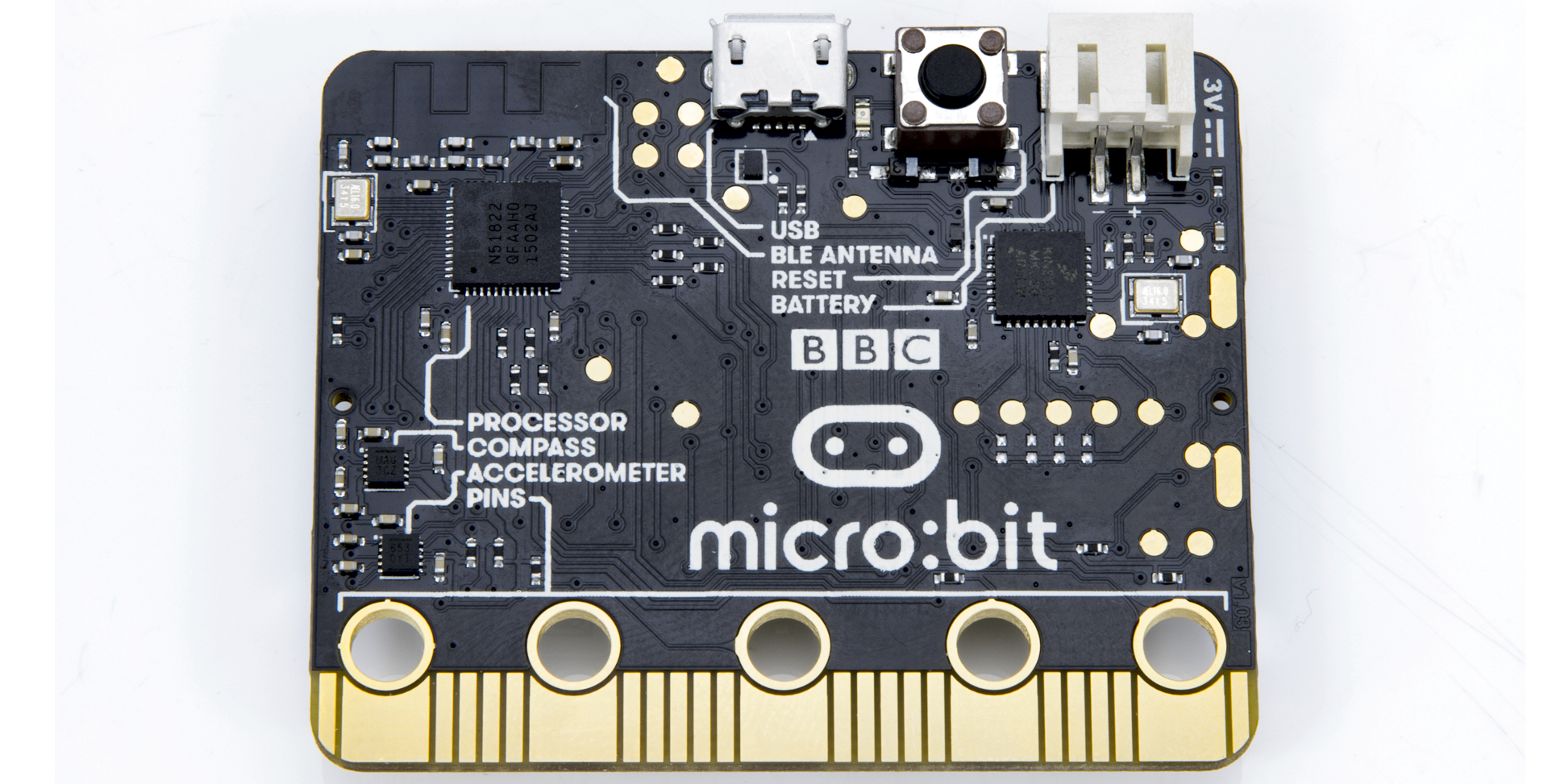
Our micro:bit review kit came with a mono speaker, some crocodile clip leads, an audio cable designed to work with the micro:bit's I/O pins and a USB stick containing a number of pre-created programs for the device to go with the supplied Coding Tutorials book. Sadly, final kits for the general public will be far less generously supplied and will come with just a USB cable, the battery pack and the batteries themselves.
Teaching materials
While the BBC micro:bit is an interesting bit of hardware, the teaching materials that go with it are actually the most important bit of the package. Unfortunately, it's here that the micro:bit starts running into problems.
The review package we received included a book of coding tutorials, a quick-start guide for teachers including basic information about the hardware, more projects and a set of suggestions for integrating the micro:bit into the Key Stage 3 curriculum. There's also a website which provides quick access to projects, lesson plans and online editors you can use to write programs for the micro:bit.
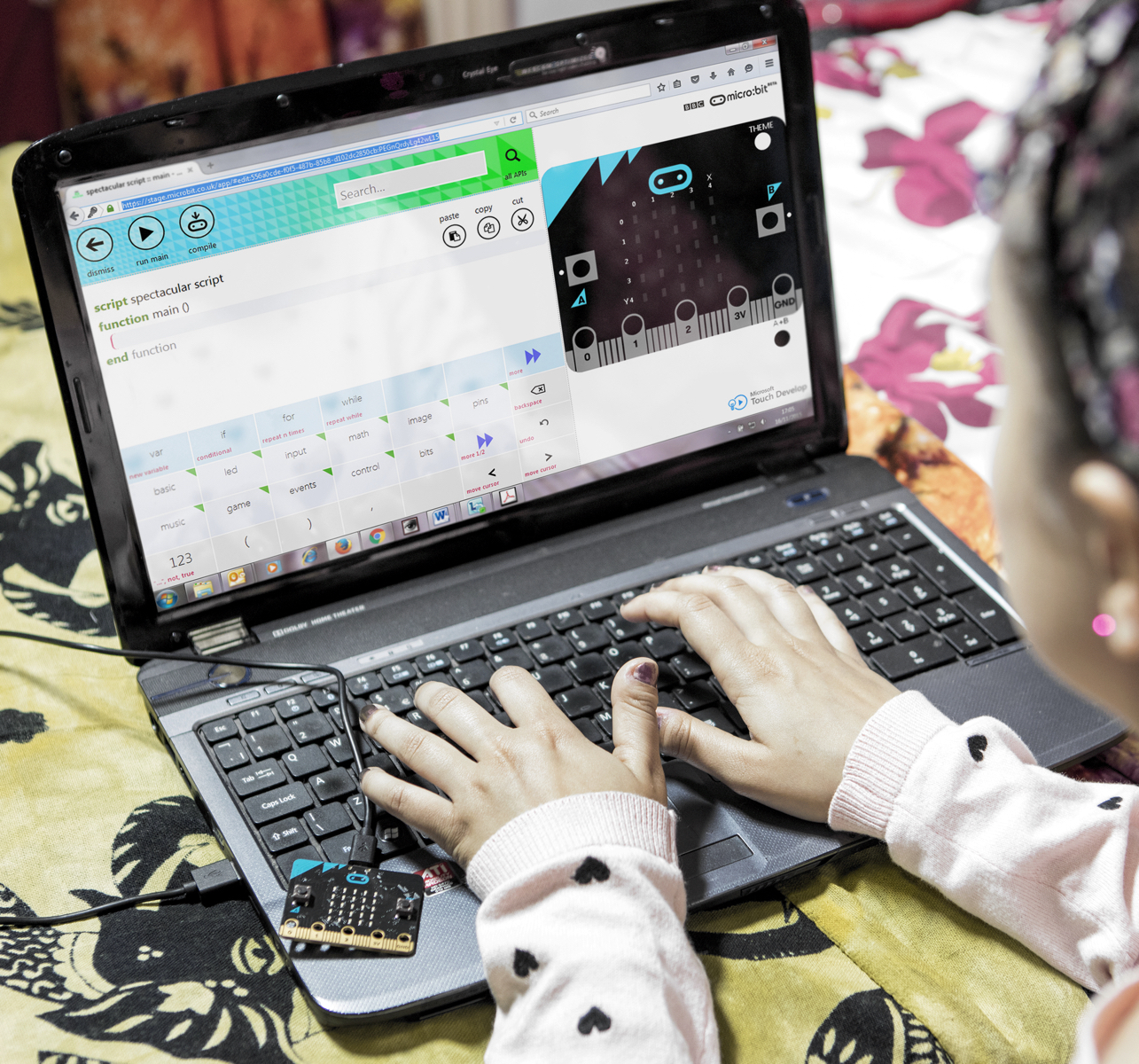
Unfortunately, the website's graphics-heavy design makes it difficult to navigate and almost impossible to search. Lesson plans, in particular, feel a little under-developed, although there are some fun and creative projects to be found, with clear, step-by-step instructions for anyone to follow.
The supplied teachers' guide is text-heavy and contains erroneous instructions, such as directing users to the wrong menu to find the clear screen function in the Microsoft Block Editor. Most importantly, the supplied teaching materials don't cover the programming concepts and logic being used. For example, a number of lessons use loops, functions and if...else constructs. These are basic programming building blocks, but they're glossed over.
This is not only unhelpful to teachers, who may not themselves be fully familiar with the basic principles of programming, but is even more of a problem if the kit is to be used independently by pupils, as the accompanying guides suggest.
The absence of any grounding in core programming concepts is likely to make it harder to get young users interested in such a simple device when they'll have been using smartphones for years. The quality of content and background context in particular compares poorly to Usborne's classic (and now free) computer books introducing programming to young people, as well as modern online and printed educational guides.
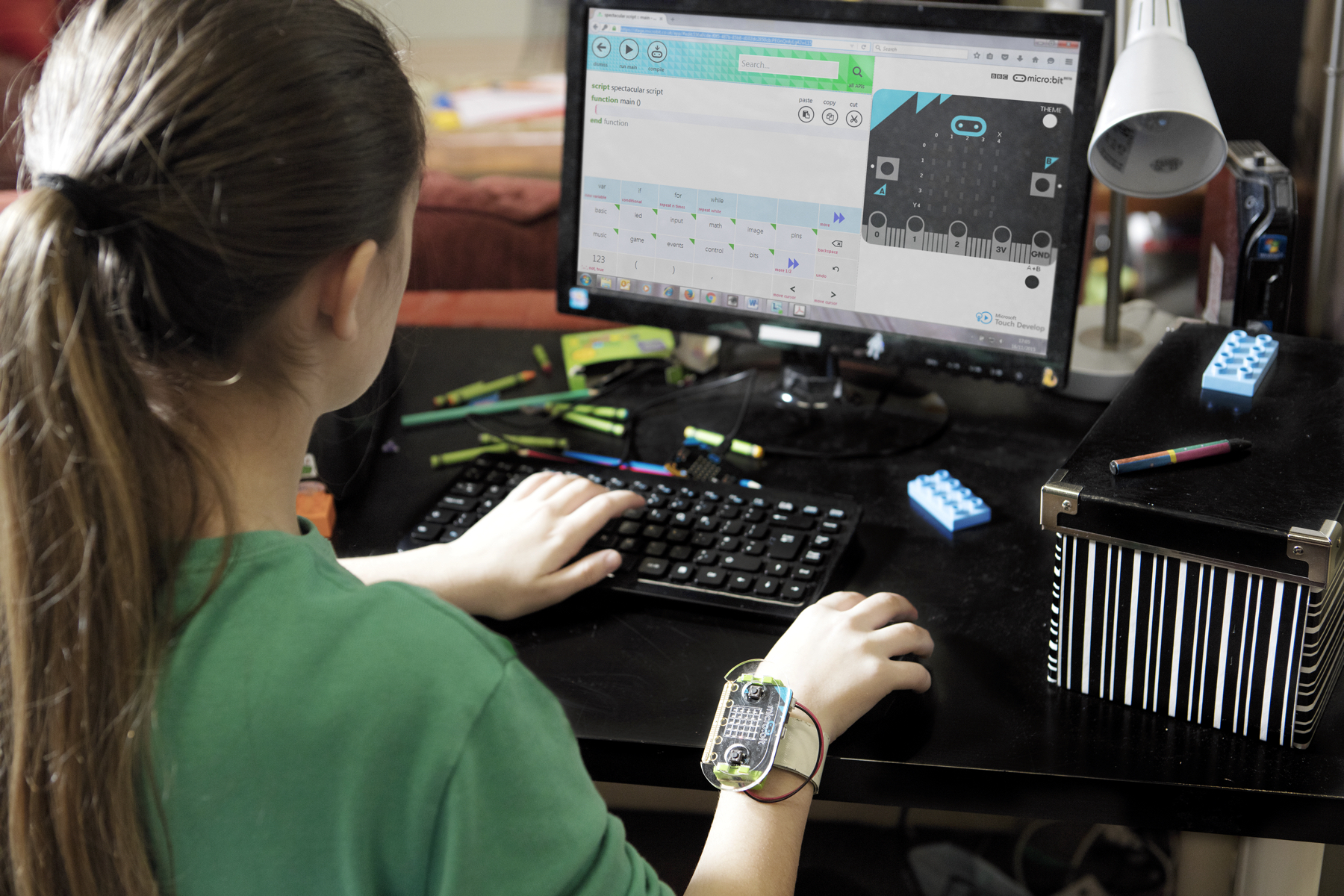
The BBC's Are You Game set of online guided tutorials that take students through programming simple micro:bit games to be played on its little grid of LEDs. These tutorials are a move in the right direction when it comes to interest value, but again don't explain how and why the programs work the way they do.
However, we were pleased to find that third-party learning resources are already available online. It's this kind of community support that's made the Raspberry Pi and Arduino so popular among a wide range of users. If the trend continues then it'll bode well for the micro:bit's future, despite patchy official resources.
Using Micro:Bit
The micro:bit website provides four online development environments, which range from the click-and-drag interface of Microsoft Block Editor to hybrid environments such as Code Kingdoms JavaScript editor and Microsoft Touch Develop. There's also a highlighting text editor for writing MicroPython scripts, which includes built-in documentation and simple code snippets yet feels very similar to a standard desktop highlighting editor.
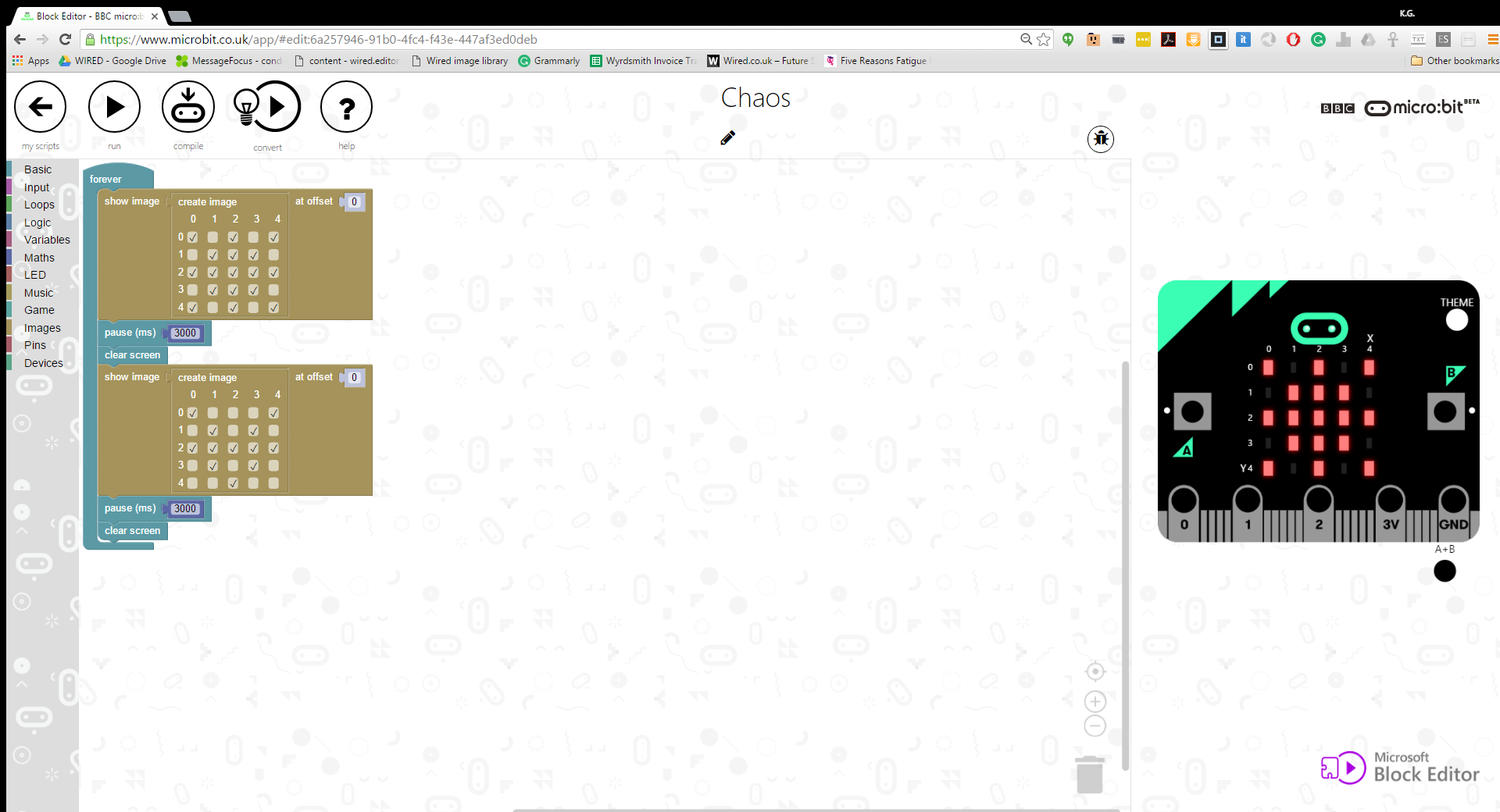
Using Microsoft Block Editor with the Micro:Bit
The micro:bit uses a microcontroller-oriented version of Python called MicroPython and there's a wealth of information available for the micro:bit specific incarnation. If you already have a Raspberry Pi, then the mu editor and a set of simple instructions are available to get you up and running with Python programming on a Linux computer with a kid-friendly interface.
Projects are available for all of the languages and editors, starting with Block Editor, the simplest, and moving up to MicroPython, which gives you the most versatile interface and the widest range of transferrable programming skills. There's also a micro:bit Android app, although the process of pairing it via Bluetooth is a little frustrating, thanks to some awkward button-pushing gymnastics, six-digit pairing codes and an infuriatingly short window in which to enter them in the app. Rather than having its own coding interface, the app sends you to the website where you can use editing tools you're already familiar with.
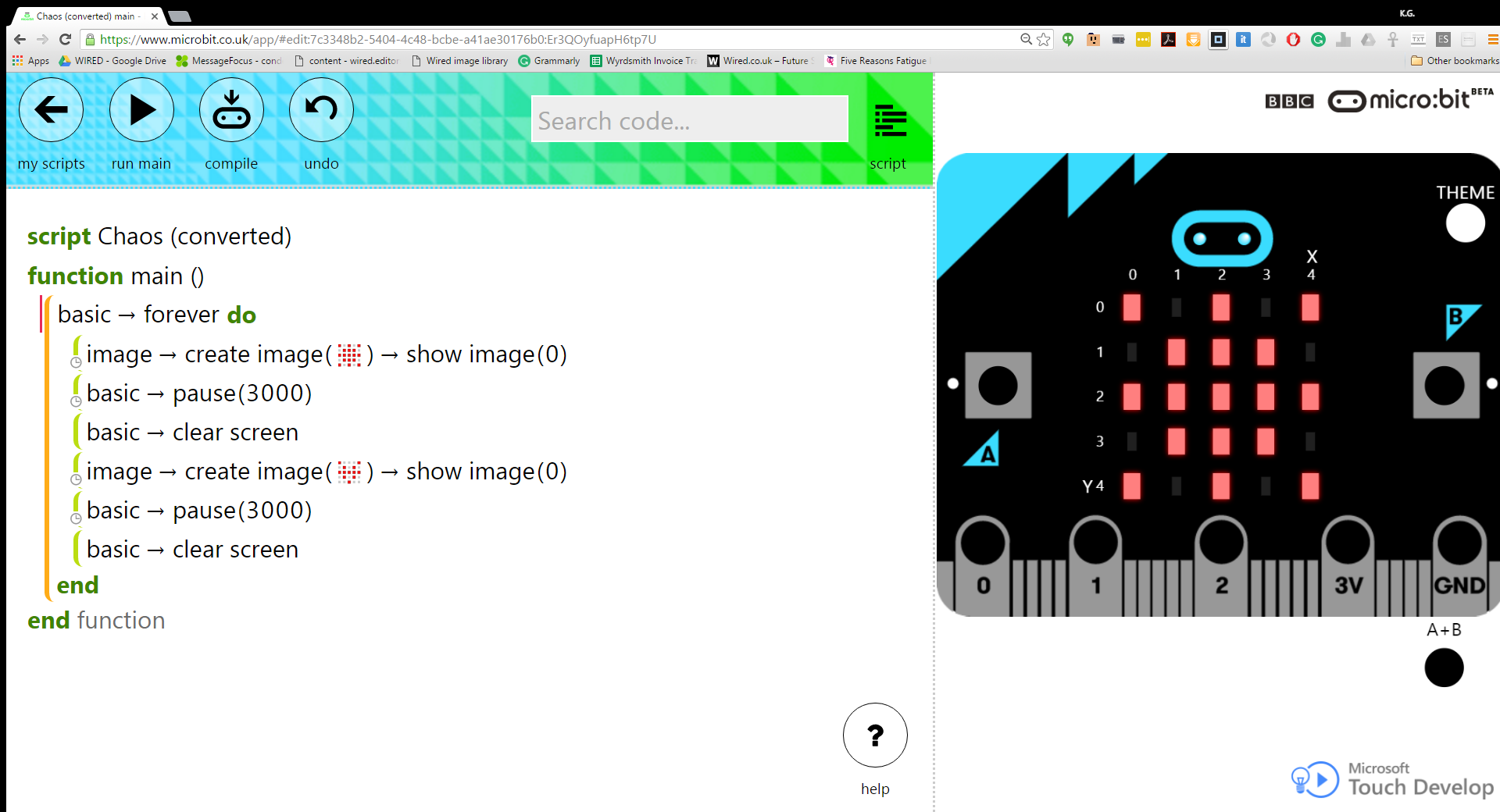
Using Microsoft Touch Develop with the Micro:Bit
The website serves as the compiler for your programs, spitting out .hex files that you can drag and drop over to your micro:bit when it's connected to your PC via USB. By default, the website uses cookies to identify and give you access to code you've previously written. This means you can only access scripts from the same device that you used to create them. However, you can also import scripts that you've previously downloaded. This means it's possible to store your programs offline, which we strongly recommend doing. Teachers can create a more permanent account that they can sign into in order to check and work with their students' code, but that's not an option available to students.
Conclusions
The micro:bit is an interesting piece of kit, largely thanks to its position as simple programmable microcontroller which makes it more comparable to an Arduino than a Raspberry Pi. In fact, it makes a great companion to the Pi.
However, the teaching and self-directed learning materials currently available for it aren't very well developed - a critical failing in technology education. If it's to succeed as an educational tool, or even as a useful microcontroller, the micro:bit needs accompanying tutorial materials that clearly explain the fundamentals of programming and logic and make the device fun to use in the process.
There's potential in the hardware, but how effective a tool it is for engaging young people with technology will ultimately come down to the quality of the manuals and materials released to support it.
Verdict
The BBC's new educational computer is really a programmable microcontroller, but it's held back by the quality of the projects and educational materials
Get the ITPro daily newsletter
Sign up today and you will receive a free copy of our Future Focus 2025 report - the leading guidance on AI, cybersecurity and other IT challenges as per 700+ senior executives
K.G. is a journalist, technical writer, developer and software preservationist. Alongside the accumulated experience of over 20 years spent working with Linux and other free/libre/open source software, their areas of special interest include IT security, anti-malware and antivirus, VPNs, identity and password management, SaaS infrastructure and its alternatives.
You can get in touch with K.G. via email at reviews@kgorphanides.com.
-
 Cleo attack victim list grows as Hertz confirms customer data stolen – and security experts say it won't be the last
Cleo attack victim list grows as Hertz confirms customer data stolen – and security experts say it won't be the lastNews Hertz has confirmed it suffered a data breach as a result of the Cleo zero-day vulnerability in late 2024, with the car rental giant warning that customer data was stolen.
By Ross Kelly Published
-
 Women show more team spirit when it comes to cybersecurity, yet they're still missing out on opportunities
Women show more team spirit when it comes to cybersecurity, yet they're still missing out on opportunitiesNews While they're more likely to believe that responsibility should be shared, women are less likely to get the necessary training
By Emma Woollacott Published
-
 OpenAI wants developers using its new GPT-4.1 models – but how do they compare to Claude and Gemini on coding tasks?
OpenAI wants developers using its new GPT-4.1 models – but how do they compare to Claude and Gemini on coding tasks?News OpenAI says its GPT-4.1 model family offers sizable improvements for coding, but tests show competitors still outperform it in key areas.
By Ross Kelly Published